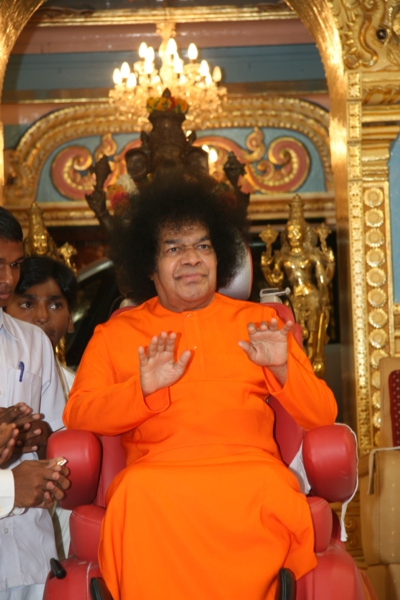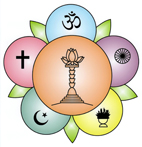
The word Kama (of the four Purusharthas or goals of human life, Dharma, Artha, Kama and Moksha) is generally associated with worldly desires and sensual pleasures. But, when it is considered as a Purushartha – as one of the purposes of life – it relates to the yearning for God and not to mundane desires. The term Moksha is generally understood as referring to the means by which one reaches God or Heaven. But one can be in Heaven only for the period earned by one’s meritorious deeds and at the end will have to be reborn again. But Moksha in the true sense refers to a state in which nothing is lacking and there is no incoming or going out. It is a state without name or form. It is not a specific place to go to. It is the attainment of unity with the Divine. For every human being, the first task, among the four Purusharthas, must be to determine what is permanent and what is transient and seek the Eternal Madhava. The second objective is the acquisition of Divine Wisdom as the real wealth. The third is to develop faith in God and yearn for realisation, of mergence in God. The fourth is Moksha, the state of Self-realisation in which there is no change and there is no movement. – Divine Discourse, Jan 14, 1985.
Gedanke für den Tag aus Prasanthi Nilayam vom 16. Januar 2023
Das Wort Kama (von den vier Purusharthas oder Zielen des menschlichen Lebens, Dharma, Artha, Kama und Moksha) wird im Allgemeinen mit weltlichen Wünschen und sinnlichen Vergnügungen in Verbindung gebracht. Wenn es jedoch als Purushartha – als eines der Ziele des Lebens – betrachtet wird, bezieht es sich auf die Sehnsucht nach Gott und nicht auf weltliche Wünsche. Der Begriff ‚Moksha‘ wird im Allgemeinen so verstanden, dass er sich auf die Mittel bezieht, durch die man Gott oder den Himmel erreicht. Aber man kann nur so lange im Himmel sein, wie man es sich durch seine verdienstvollen Taten verdient hat, und am Ende muss man wiedergeboren werden. Aber Moksha im wahren Sinne bezieht sich auf einen Zustand, in dem es an nichts fehlt und in dem es kein Kommen und Gehen gibt. Es ist ein Zustand ohne Namen oder Gestalt. Es ist kein bestimmter Ort, an den man gehen muss. Es ist die Erlangung der Einheit mit dem Göttlichen. Für jeden Menschen muss die erste Aufgabe unter den vier Purusharthas darin bestehen, zu bestimmen, was dauerhaft und was vergänglich ist, und den Ewigen Madhava zu suchen. Das zweite Ziel ist der Erwerb der göttlichen Weisheit als wahrer Reichtum. Das dritte Ziel ist die Entwicklung des Glaubens an Gott und die Sehnsucht nach dem Erkennen, der Verschmelzung mit Gott. Das vierte Ziel ist Moksha, der Zustand der Selbstverwirklichung, in dem es keine Veränderung und keine Bewegung gibt.
Sri Sathya Sai, 14. Januar 1985
© Sri Sathya Sai Media Centre | Sri Sathya Sai Sadhana Trust – Publications Division
